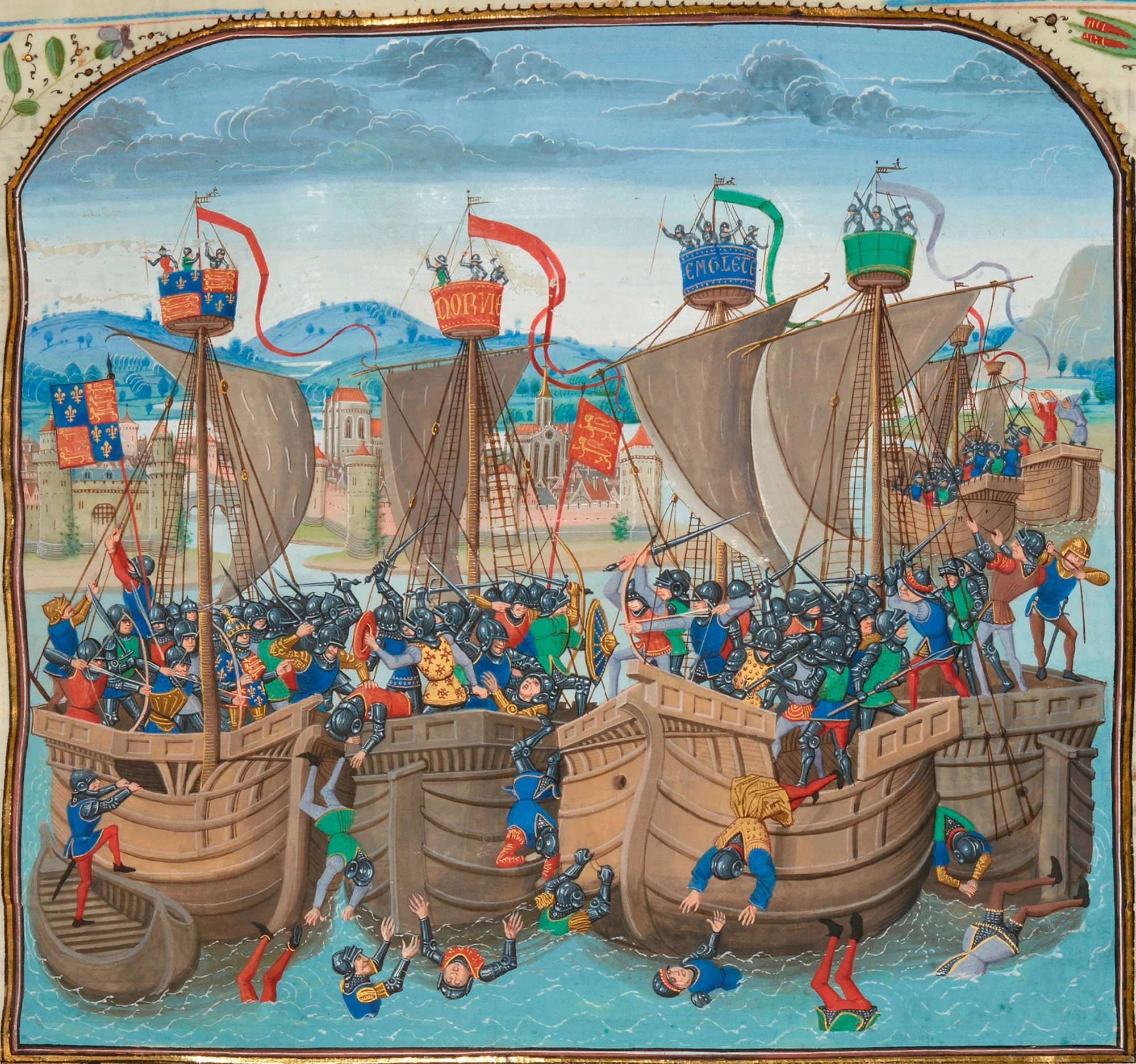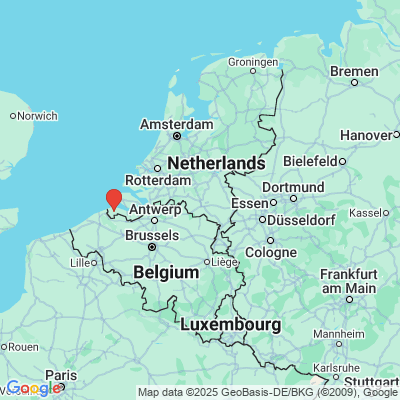A miniature of the battle from Jean Froissart's Chronicles, 15th century. BNF, fr. 2643 fol. 72.
In June 1340, the waters near the port of Sluys—on the coast of what is now the Netherlands—became the site of a brutal and decisive naval confrontation between England and France. This clash, known as the Battle of Sluys, marked one of the opening engagements of the conflict that would later be called the Hundred Years’ War—a protracted series of wars fought between the two kingdoms from 1337 to 1453. While the conflict is often associated with dynastic claims to the French throne, its roots also lay in fierce competition over trade, land, and political influence in western Europe.
At the time, King Edward III of England was pressing a claim to the French crown through his mother, Isabella, a French princess. The French monarchy, however, rejected his claim, invoking the Salic law to bar succession through the female line. As diplomatic relations collapsed, war broke out, and with it came the strategic need to control key maritime routes. England, dependent on cross-Channel supply lines and the wool trade, could not afford to lose control of the sea. The French, recognizing this, had concentrated a formidable fleet—estimates suggest between 120 and 200 ships—at Sluys, aiming to blockade English ports and launch raids along the southern coast of England.
The French strategy at Sluys relied on using their ships as floating fortresses: they chained them together across the mouth of the harbor, forming an improvised barrier that they hoped would halt any English attempt to break through. On board were thousands of soldiers and marines, perhaps as many as 20,000 men, including Genoese mercenary crossbowmen hired for their effectiveness in naval warfare.
Edward III, commanding a slightly smaller fleet of around 120 ships but supported by experienced sailors and longbowmen, decided to attack directly. On 24 June 1340, in a bold and aggressive move, the English fleet launched its assault. Utilizing superior maneuverability, coordinated tactics, and the deadly range of the English longbow, they managed to overpower the French fleet. The battle turned into a massacre: many French ships were captured or sunk, and thousands of French soldiers and sailors were killed or drowned.
The victory at Sluys gave England control of the English Channel for years to come. While it did not end the war—indeed, the Hundred Years’ War would drag on for more than a century—it secured a vital lifeline for English military campaigns in France and marked the beginning of England’s emergence as a serious naval power in medieval Europe.


